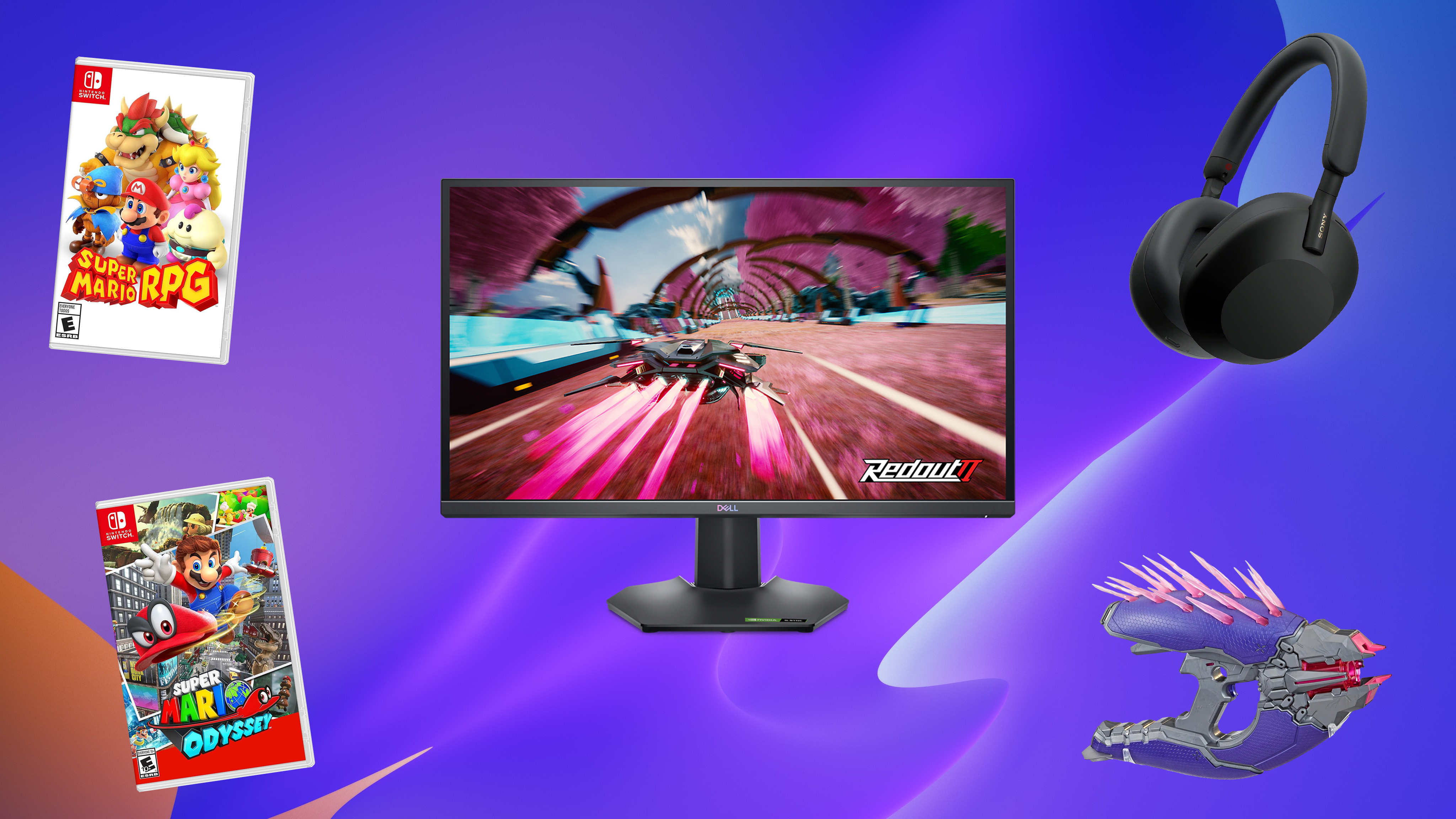Google is back again with the latest iteration in its Pixel line. The new Pixel 8 Pro is geared up to be the top dog and a challenger for ranking as the best smartphone on the market. It has big shoes to fill, as the Pixel 7 Pro was a smash hit and neither Samsung nor Apple have been sleeping on upgrading their flagship lines. By comparison, the Pixel 8 Pro actually feels like it may be a more relaxed update than Samsung’s Galaxy S23 Ultra or Apple’s iPhone 15 Pro Max, but Google’s phone also costs hundreds less, even at its year-on-year elevated price of $999. It's shaping up to be a potent phone for the photo fiends, but Google may have hyped up its AI features a little bit too much.
Google Pixel 8 Pro – Design and Features
The Google Pixel 8 Pro didn’t change much from its predecessor as far as design is concerned. The update is minor enough that I was able to fit my old Pixel 7 Pro case on the new phone, even if it’s not a perfect match. Google has made a few tweaks to shape and some changes to dimensions that have to be measured down to the millimeter to notice a difference. I’ve personally found my year with the Pixel 7 Pro to be quite the stretch for my hands on a regular basis, and the Pixel 8 Pro just keeps that same unwieldiness going. Though the changes are subtle, it’s still apparent that it’s a different phone, even if nothing about the 8 Pro’s design makes it seem like the newer of the two phones.
Part of that comes down to the display. Google opted for a flat display on the Pixel 8 Pro where the Pixel 7 Pro had curved sides on its display. Those curves may give the earlier phone a few extra style points, but when it comes down to functionality and durability, it may lose those points just as quickly. The flat screen could have been a cost-saving measure for Google, or it may have been part of the company’s effort to make its phone more repairable. Either way, I found it slightly easier to use, if less pleasant to look at.
Google has downgraded the resolution of the display ever so slightly, going for a 1,344 x 2,992 panel, but I’m hard pressed to notice individual pixels on even a 1080p display at this size from more than about a foot away, so I find the screen more than sharp enough. That’s lucky for Google, too, as the phone defaults to running at a reduced 1,008 x 2,244 resolution.
The more important aspect is the brightness, contrast, and color, and the Pixel 8 Pro delivers. It has a similar LTPO OLED display to the Pixel 7 Pro, offering smooth motion and variable refresh rates from 1Hz up to 120Hz. What sets it apart is a 2,400-nit peak brightness for outdoor use, which is not only a huge leap over the 1,500 nits of its predecessor but also a big step up over even the iPhone 15 Pro and Pro Max, which top out at 2,000 nits. While I couldn’t precisely measure the brightness, I didn’t struggle to see the display even with a super bright flashlight shining on it. That bright panel pairs with the pitch black capabilities of OLED and a rich color palette. Watching Good Omens’ second season and seeing the universe spring to life in dazzling color was a treat on this display. And the dark headshots that serve as an opening sequence to all recent Star Wars content never look better than on an OLED display like this.
Unfortunately, beyond the display, the phone isn’t offering any really exciting hardware upgrades. It’s just as water resistant as the prior model. Its stereo speakers are about as powerful as last year’s – as in, enough for a casual TV show or just barely enough to hear a podcast while showering. The phone feels about the same in the hand. And for any hairs it trimmed off the thickness of the main portion of the chassis, it added those hairs right back onto the camera bump.
Google has revised that camera bump once again, seating all three cameras behind the same piece of glass instead of separating out the telephoto camera. It’s that difference that’s the most apparent when looking at two phones side by side. A new sensor has also cropped up on the back in the form of a discreet little temperature meter. It’s not FDA cleared for use on humans yet, but it can take the temperature of various objects and liquids from two inches away.
Some of Google’s most talked-about features that come with the Pixel 8 and 8 Pro are software based and seem to actually have little to do with the devices’ own capabilities. I’ll dig into those below.
Google Pixel 8 Pro – Software
The Pixel 8 Pro comes running Android 14, but it’s not readily apparent. Switching over from my Pixel 7 Pro on Android 13, I didn’t notice any immediate differences in software. The phone still has a similar home screen setup with its space-wasting, locked-in 5x5 grid maximum, leaving space at the top and thrusting a Google search bar at the bottom upon me (I prefer it elsewhere). The Quick Settings panel continues to be big and bubbly while lacking information density, making it decidedly less quick at handling settings than Samsung’s implementation.
A big part of what makes Google's phones exceptional is their software. Google often introduces new, special features to entice customers to its new hardware, even though sometimes it seems the hardware has little do with actually enabling those new features. A lot of this year's highlights are camera features, like the new Magic Editor and Best Take tools, as well as Magic Eraser, which debuted on the Pixel 6 series.
Magic Editor, Google’s AI-powered Photoshop-like tool for moving and resizing subjects, works nowhere near as quickly as Google’s presentation made it seem. It doesn’t seem to be doing on-device (or at least not exclusively) processing as it requires cloud backups and an internet connection to function. It’s basically a quick way to do some semi-sloppy edits, as the edge detection on subjects is fairly hit or miss (not what you want when the only way to correct selections is a finger). The most impressive bit is its ability to fill in background details when moving a subject, as I’ve watched it effectively recreate missing parts of a car. But close inspection shows plain issues, and it’s still not enough to make up for the inaccuracy in subject selection. Once edits are made, the tool takes close to 15 seconds for them to bake, and then you get to view a few results and decide whether they’re good enough or if you need to go back in. It may be able to do what it would take someone in Photoshop quite a bit more time to do, but the results have invariably been something I’d still need to take into Photoshop to finish up.
Similarly, Google’s Best Take tool, which lets you swap faces between multiple similar camera shots in order to get that perfect smile on everyone, works irrespective of the device the photos were taken on, as long as they’re in Google Photos. Like Magic Editor, it’s a quick tool, and what it suffers in getting things right every time, it makes up for in speed. It takes a little time to look for alternative shots, but then allows for some quick switches to see which face looks best in the shot. It doesn’t seem to like faces that aren’t looking directly at the camera, and it can glitch out when dealing with hair and necks, but it feels an altogether more polished tool than Magic Editor.
Google also hyped up a special feature called Video Boost that’s meant to dramatically improve video footage captured in dark environments, but that feature wasn’t available at the time of testing.
Google Assistant has also been upgraded. It can now switch between languages while voice typing, which is fairly handy for multilingual users, but it’s a bit slow on the jump when switching languages and I often found it needed me to repeat myself whenever I switched back to the language I started in. Assistant also gets a Bard feature with the ability to summarize articles, but I wouldn’t depend on it. I had it summarize one of my buying guides, and it didn’t even bother to mention which product was my top recommendation, so good luck using it to get the main points of something it reads for you. When I then had it summarize additional articles, it occasionally got confused and mixed details from the previous summary into the new summary, in one case coming up with a chimera summary of MagSafe battery banks for charging ebikes.
Bigger than the software the Pixel 8 Pro comes running with is the software that it will end on. While the Pixel 7 line was promised 3 years of updates, Google has bumped that up considerably to offer 7 years of software, security, and feature updates for the Pixel 8 phones. If Google actually lives up to that promise, it will be big, especially if some of those updates smooth out the features I’ve just discussed. That said, Google has a knack for putting products out to pasture, and a lot can change in 7 years.
Google Pixel 8 Pro – Gaming and Performance
The Pixel 8 Pro has a Tensor G3 chip beating at its center, where a heart should be. That is to say, an unknown quantity. This new chip runs a nona-core processor, featuring a similar 4 big core, 4 little core arrangement to the Tensor G2 but adding an extra high-performance core. Aida64 reports these as four Cortex-A715 cores (at 2367MHz), four Cortex-A510 cores (at 1704MHz), and one Cortex-X3 core (at 2914MHz), which has some similarities to the 9-core arrangement in the powerful Snapdragon 8 Gen 2 chipset used in other Android flagship phones, except Google is running at lower clock speeds. Google suggests its new chip is both faster and more efficient than its predecessor. That bears out in my experience.
For the great majority of my use, the phone proved perfectly responsive, quickly launching apps, reacting to inputs, and letting me get done what I wanted to get done. It played Call of Duty mobile at max settings and what looked like 120fps quite readily. And though it had some occasional stutters in Honkai Star Rail, it was generally fluid. That makes for a tough comparison to Apple’s latest iPhone 15 Pro, though, which ran Honkai Star Rail and Genshin Impact maxed out without issue and is promising to run triple-A games like Resident Evil 4 Remake soon as well. The only real hitches I noticed were when I tried to force it to do something while it was already under a heavy load, such as trying to rotate the display and exit to the home screen while a game was running, which caused momentary glitching.
As far as efficiency goes, the Pixel 8 Pro seems to have at least a slight edge on its predecessor. Casually browsing the web and running games both seemed to generate a little bit less heat than I’ve grown accustomed to from the Pixel 7 Pro, which likes to start baking its guts during just about any task.
Just how quickly you’ll be running for the charger is going to depend a lot on how you use the phone. Streaming a 30-minute video on Wi-Fi with the display at 50% brightness only drained the battery 3%. Playing 10 minutes of Honkai Star Rail with settings dialed up took 5% off the charge. A busy day browsing, playing with the cameras, streaming over an hour of podcasts on cellular data, and streaming on a mix of Wi-Fi and cellular data saw the battery drain to 25% by 5PM, leaving me with just enough charge to consider easing up to milk it until the end of the day or finding a charger to juice back up.
Fortunately, the Pixel 8 Pro supports 30-watt PD fast charging now. This was able to see it refill from 25% back up to 44% in just 15 minutes, giving me some reassurance that I’d make it to the end of the day.
Google Pixel 8 Pro – Camera
It’s pretty much a settled matter at this point that a mainstream, flagship smartphone now needs to include a four camera system consisting of a selfie cam around front and an ultrawide, wide, and telephoto in the back. This year, Apple caught up with Samsung and Google in making that telephoto a powerful, periscope-style system. Google’s been rocking the same arrangement since the Pixel 6, and it didn’t change for this year. It did see fit to make some upgrades to that arrangement though.
Here are the cameras the Google Pixel 8 Pro packs:
- 50MP (binned to 12.5MP) Wide, f/1.68, 1.2-micron, Laser AF, OIS
- 48MP ultrawide (binned to 12MP), f/1.95, 0.8-micron, 125.5-degree FOV
- 48MP telephoto (binned to 12MP), f/2.9, 0.7-micron, 5x optical, OIS
- 10.5MP Selfie, f/2.2, 1.22-micron, 95-degree FOV
The big shifts Google has made this time around are hard to see, but they’re part of efforts at making all of the cameras better at seeing (read: capable of gathering more light). This comes in the form of bigger sensors, wider apertures, or both.
This time around, Google’s main sensor continues to be excellent. Taking the same photo on the new phone and my old Pixel 7 Pro, the 8 Pro produces an ever-so-slightly brighter image. It manages colors that have a decent saturation to them, making them look lively but not overdone or unnatural. Its clarity is strong, keeping fine details and holding up well even at 2x zoom. Sometimes the phone opts to use the main sensor at 5x digital zoom to compensate for darkness instead of using the telephoto at its base optical zoom, and this doesn’t produce the best images, but they’re not terrible either (good news for anyone who wants the smaller Pixel 8 and has FOMO about missing out on the telephoto). Unfortunately, even with the new pro controls Google added to the Pixel 8 Pro’s camera app, the ability to force the phone to use a specific sensor is missing.
The ultrawide camera certainly gets the advantage in brightness compared to the Pixel 7 Pro. In darker environments, it manages to provide a brighter, more colorful photo, though clarity in the dark is still not excellent as the camera relies on lower shutter speeds to get those brighter images. Moving subjects or shaky hands therefore have a bigger impact. The ultrawide is effectively best for bright environments where you want to capture as much of your surroundings or can’t back away from a large subject.
The telephoto sensor is also largely an improvement. It tends to produce a brighter and less noisy image in the same environment as the Pixel 7 Pro, though sometimes it doesn’t have as fine of detail. It’s great for getting up close on subjects that are far off and getting a shallower depth of field for a natural portrait mode that doesn’t rely on software trickery. The sensor makes great pictures at 5x and even holds up well boosted to 10x zoom, though beyond that it becomes more for playing than for capturing share-worthy images.
The selfie camera’s big improvement is simply the addition of auto-focus. It can help for some stylized shots with extreme close-ups and distant backgrounds, letting you select which to have in focus, but the blur isn’t extreme in either case, and most shots won’t end up looking all that different to last year’s camera. That is to say, the selfie camera is on point and captures a good looking shot, even if it’s hardly an improvement on what was already a strong shooter last year.
While Google has promised big improvements to video, it hasn’t delivered them entirely. For one thing, the camera is still capable of 4K/60 max or 4K/30 with HDR. The increased apertures should help out some when recording in dark settings, but Google’s Video Night Sight and Video Boost features weren’t available at the launch of the phone. Google’s Audio Eraser is the most compelling upgrade for video, as it can separate different elements like speech and wind, letting me adjust their volume individually. It proved capable of separating my voice from a loud fan quite effectively, though like Google’s other enhancements, it’s not quite perfect. Almost all of my speech was separate, except one word at the end of what I was saying, and there’s no option to adjust or correct the separation.







